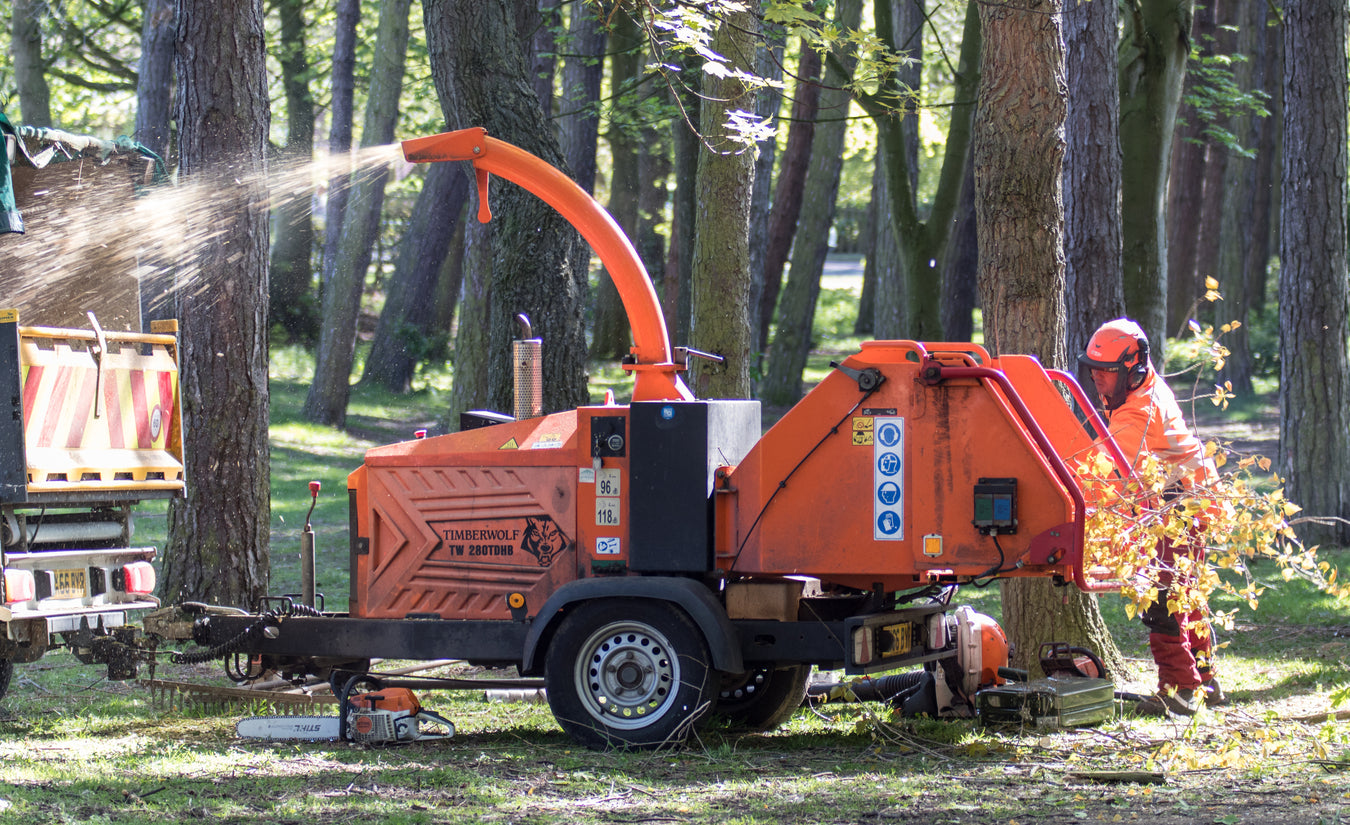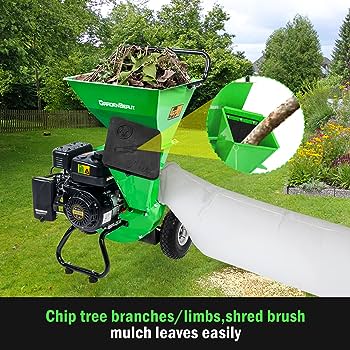Portable wood chippers can chip old dead branches, although it may take more effort as dead wood is harder material and puts more strain on the chipper. However, caution must be exercised as some wood chippers have a tendency to grab dead material and cause it to explode, potentially sending bits back towards the operator.
Factors To Consider For Chipping Old Dead Branches
Portable wood chippers can indeed chip old dead branches, although it’s important to consider a few factors before doing so. Dead wood is harder and more difficult for chippers to process compared to green material. This means that chipping dead branches will put more strain on the chipper and may require more maintenance. Additionally, dead material tends to be drier and can create a greater risk of exploding or sending back debris towards the operator.
When using a wood chipper, it’s best to have a car-sized pile of smaller branches to chip, as larger branches may require more time and effort. It’s also worth noting that consumer-grade wood chippers may not be suitable for chipping other types of material besides yard waste.
Overall, while it is possible to chip old dead branches with a portable wood chipper, it’s important to carefully consider the impact on the chipper and take necessary safety precautions.

Credit: landmarktools.com
Tips For Efficiently Chipping Old Dead Branches
Portable wood chippers are capable of chipping old dead branches, although it is important to consider a few factors for efficient chipping.
Preparing the branches for chipping: Dead wood is harder and denser than green wood, making it more challenging for the chipper. Therefore, it’s essential to properly prepare the branches by removing any large knots or branches that may cause jamming.
Using the right techniques to feed branches into the chipper: When feeding the branches into the chipper, it’s recommended to start with smaller branches and gradually increase the size. This helps prevent overloading and reduces the risk of jams.
Maintenance guidelines for ensuring optimal performance: Regular maintenance is crucial for the chipper’s performance. This includes sharpening the blades, cleaning the chipper regularly, and lubricating moving parts. Following the manufacturer’s instructions for maintenance is essential to ensure the longevity and efficiency of the chipper.
Benefits And Limitations Of Chipping Old Dead Branches
Portable wood chippers are versatile machines that can chip old dead branches, although the process may present some benefits and limitations.
Advantages of using a wood chipper for old dead branches:
- Efficiency: A wood chipper can quickly and efficiently transform old dead branches into small wood chips, reducing the volume of the material.
- Reuse: Wood chips produced from the chipping process can be used for various purposes, such as mulching gardens, producing compost, or as a source of energy.
- Convenience: Portable wood chippers can be easily transported and used on-site, making it convenient for chipping dead branches in different areas.
Limitations and challenges when chipping old dead branches:
- Harder Material: Dead wood is typically harder than green wood, which can put additional strain on the chipper and potentially impact its performance.
- Potential Material Explosion: Dead branches may be prone to explode during the chipping process, which can lead to some wood fragments being thrown back towards the operator.
- Burning: Dry dead branches can be burned as an alternative to chipping, although this method is less environmentally friendly.
- Hauling: Instead of chipping, old dead branches can be hauled away and disposed of through other means, such as municipal waste collection services.
- Composting: Another option is to leave the dead branches to decompose naturally over time, either in a designated composting area or by allowing them to decay in a wooded area.
Frequently Asked Questions For Can Portable Wood Chippers Chip Old Dead Branches
Can You Put Dry Branches In A Chipper?
Yes, you can put dry branches in a chipper. The chipper is capable of chipping and breaking down dry branches into usable form. However, it is not suitable for dead branches, palm fronds, or vines.
Can A Wood Chipper Chip Lumber?
Yes, a wood chipper can chip lumber. However, it is important to note that pressure-treated lumber is difficult to chip as it is very hard and may cause the chipper blades to break or jam.
Can You Chip Wet Branches?
Yes, a wood chipper can chip wet branches. However, it may require more effort from the chipper as wet branches are harder material. Additionally, there is a possibility of bits being sent back towards the operator when chipping dead material.
Despite these challenges, chipping wet branches is still doable.
What Not To Put In A Wood Chipper?
Avoid putting the following in a wood chipper: palm fronds, vines, pressure-treated lumber, and large trunks. Stick to chipping dry and fresh branches, leaves, and untreated timber for safe and efficient chipping. Remember to consult the manufacturer’s guidelines for appropriate usage.
Conclusion
To conclude, portable wood chippers are capable of chipping old dead branches. Although the material is harder and can put more strain on the chipper, it is still doable. However, it’s important to note that when chipping dead wood, there is a possibility of the chipper grabbing the material and sending it back toward the operator.
Despite this, chipping dead branches is a viable option for those with a car-sized pile of small branches. Overall, while wood chippers are great for chipping dry and fresh wood, they may not be suitable for other types of material.

